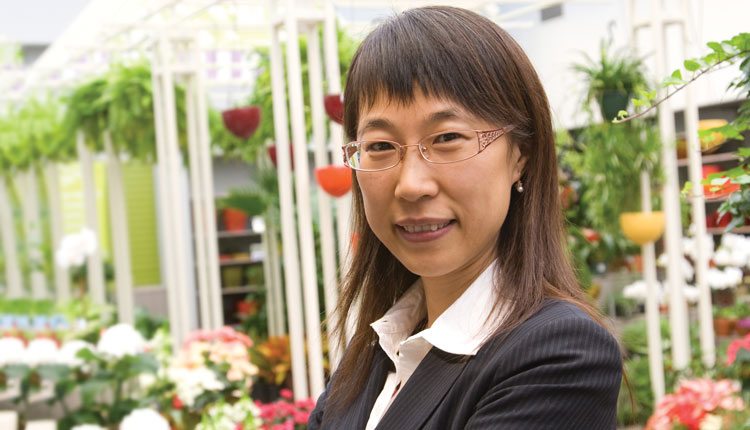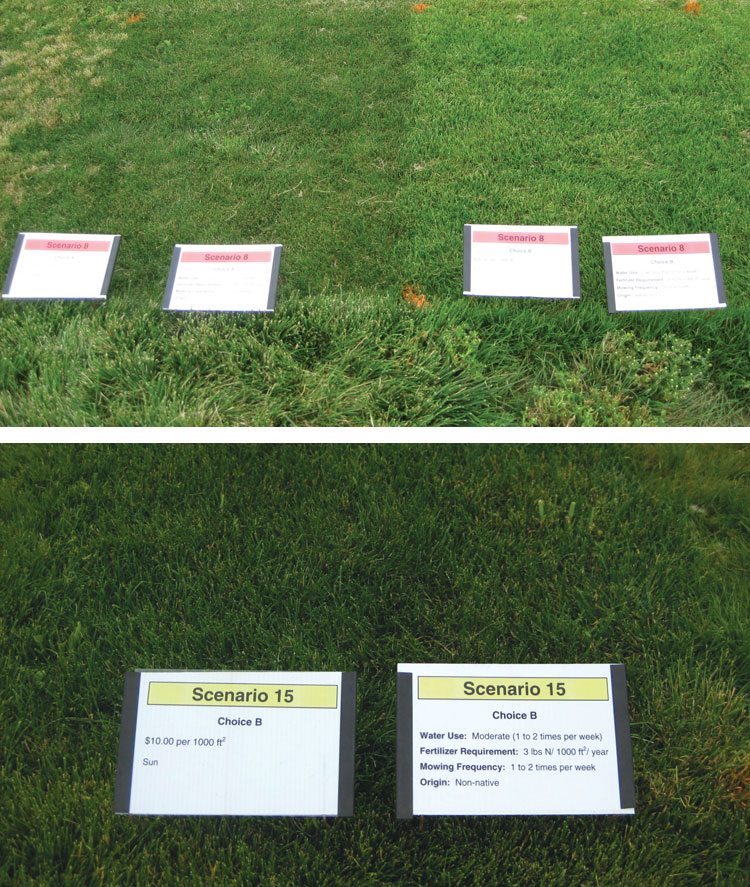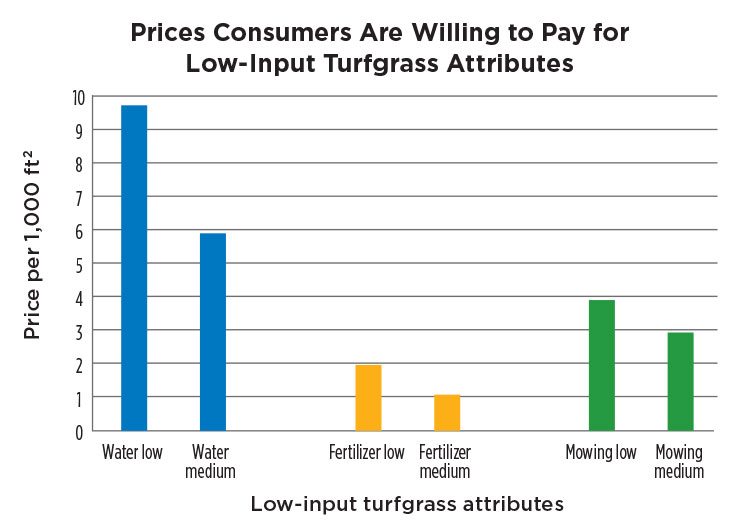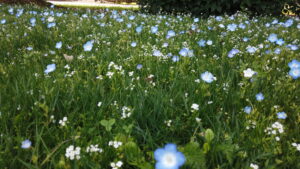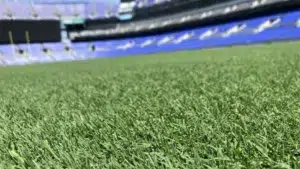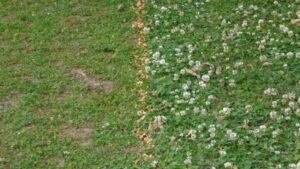Chengyan Yue, Associate Professor, Department of Horticultural Science and Department of Applied Economics, University of Minnesota
Eric Watkins, Associate Professor, Department of Horticultural Science, University of Minnesota
About The Author
Chengyan Yue holds the Bachman Endowed Chair in Horticultural Marketing and is an associate professor in the the departments of Horticultural Science and Applied Economics at University of Minnesota. By better understanding consumers’ and other stakeholders’ preferences, Yue’s research provides important guidance and implications for marketing horticultural products in strategic ways.
Introduction
Healthy residential lawns provide important environmental benefits such as urban heat dissipation, water quality protection, erosion control and carbon sequestration, as well as functional and aesthetic benefits to society. Widespread urban development has led to substantial growth in lawn acreage and the subsequent increase in the amount of resource inputs (fertilizer, water, etc.). The use of low-input turfgrass species on residential lawns could be a viable strategy to reduce the rising environmental and economic costs of maintenance inputs as well as satisfy public concerns about water conservation and pesticides and fertilizer reduction. During the past few decades, researchers have identified and developed alternative grass species suited for low-maintenance sites. Previous research shows there is market potential for environmentally-friendly goods and services but there has been no information on consumer preferences for maintenance attributes of turfgrasses.
The research focused on answering the following questions:
1. Will consumers be willing to pay premiums for low-input turfgrasses?
2. If yes, what are the premiums?
3. Will the premiums they are willing to pay be the same for different low-input characteristics such as reduced water use, reduced mowing and reduced fertilizer use?
4. If not, which characteristics glean higher premiums?
The results presented in this study provide important implications and insights about the market potential of low-input turfgrass species to plant breeders and professionals in the Upper Midwest turfgrass seed industry.
Method
Presurvey focus groups conducted in April 2010 helped identify a key set of nine turfgrass attributes to include in the study (Table 1). Aesthetic quality is important to homeowners, and the three aesthetic attributes included in the study were color, texture, and weed infestation. Many home lawns have a significant amount of shaded area; thus, shade adaptation was included in the set of attributes. Consumers have shown interest in native plants for landscaping (Helfand, Sik Park, and Nassauer, 2006), so origin was also included as an attribute, which was defined as being native to the United States or nonnative. Each of the aesthetic attributes, shade adaptation, and origin had two categories.
The focus groups also helped identify three turfgrass maintenance practices of foremost importance to homeowners, specifically irrigating, fertilizing, and mowing. Therefore, these three maintenance attributes were included in the choice experiment, and each had three input categories corresponding to low, moderate, and high. Price points were determined based on turfgrass seed prices obtained from consulting with various seed sales professionals in the Minneapolis and St. Paul, Minn., metropolitan area. To reduce error in participant estimation, price was given as the cost to seed an area 1,000 ft2, and prices ranged between $5 and $20 with $5 as the incremental interval.
To capture the effects of aesthetic characteristics on consumer choice behavior, we gave participants the opportunity to see and evaluate actual turfgrass plots instead of seed. Although showing a sample turfgrass plot is not typical for turfgrass varieties in retail stores, plots of new varieties are commonly tested in various public displays. Although consumers purchase seed, the turfgrass is the ultimate product that determines the demand for new turfgrass varieties. Therefore, having participants evaluate turfgrass plots allowed us to evaluate the market potential for several novel, low-input turfgrass varieties.
The choice experiment was conducted on field plots at the Turfgrass Research, Outreach, and Education Center at the University of Minnesota in St. Paul, Minn., in June 2010. The turfgrass field plots (1.52 m X 0.91 m each) were seeded in August 2009; each species was seeded at the recommended seeding rate; and typical turfgrass establishment procedures were followed. The following six turfgrass species from the field plots were used in the study: colonial bentgrass, hard fescue, tufted hairgrass, prairie junegrass, perennial ryegrass, and Kentucky bluegrass. Additionally, multiple cultivars of each species were available for the choice experiment. The six different species and the multiple cultivars of each provided the necessary combinations of aesthetic attributes.
We conducted a survey of 136 homeowners in the Minneapolis and St. Paul, Minn., metropolitan area. The main component of the survey was a choice experiment to investigate consumer preference and estimate willingness to pay for several low-input turfgrass attributes (e.g. water use) as well as aesthetic attributes, such as origin and shade adaptation.
Participants were recruited by placing an advertisement in 13 local newspapers in and around the Minneapolis and St. Paul, Minn., metropolitan area including both urban and suburban communities and also from minneapolis.craigslist.org. Participants were compensated $30.00 each for their time. To ensure that the sample was representative of the consumer market, only those consumers who had a home lawn and only members of the household who were able to make lawn care decisions and purchases were allowed to participate.
Participants were presented with a series of choice scenarios, which consisted of adjacent or nearly adjacent turfgrass plots. To lessen the cognitive burden on participants, only two turfgrass plots were included in each scenario. The two turfgrass plots in each scenario varied in aesthetic quality. For example, if Plot A was dark green, fine in texture, and had weeds, then Plot B was light green, coarse in texture, and had no weeds. The two plots in each scenario also varied in shade adaptation and origin, levels of maintenance inputs, and price, which were displayed on labels in front of each turfgrass plot.
Participants were asked to choose which alternative (i.e. turfgrass plot) in each choice scenario they would rather purchase. They were also given the option to choose ‘‘neither’’ for each scenario, indicating they would not purchase either alternative. The opt-out alternative was included in the experimental design to make the choice situation more realistic. Participants were asked to choose which grass seed in each choice scenario they would rather purchase. Of the 136 homeowners who participated, 128 provided enough information for analysis.
On average, participants were approximately 45 years old, and 51 percent of the participants were female. Sixteen percent of participants had a high school diploma or less; approximately 63 percent of them had some college or a college diploma, and 21 percent had some graduate school or had a graduate degree. Twenty percent of participants had children younger than 12 years old. Thirty-one percent of the participants’ household income was less than or equal to $50,000; 47 percent of participants’ household income was greater than $50,000 and less than $100,000; and approximately 23 percent of participants’ household income was over $100,000. Eighteen percent of participants’ home lawns were larger than 8,000 ft2, and when asked what type of grass do you currently have on your lawn, 61.8 percent indicated they did not know. Twelve percent of participants stated that they had Kentucky bluegrass on their lawn, and only 6.9 percent stated that they had perennial ryegrass.
Findings
The price premiums for low-input attributes are shown in Figure 1. Compared to a high irrigation requirement grass seed, participants were willing to pay $9.70 per 1,000 ft2 more for a turfgrass with a low irrigation requirement, and they were willing to pay $5.85 per 1,000 ft2 more for a turfgrass with a moderate irrigation requirement.
Another characteristic evaluated was the frequency at which the turfgrass would need to be mowed. Compared to the most frequent mowing requirement, participants were willing to pay $3.92 per 1,000 ft2 more for a turfgrass requiring infrequent mowing, and they were willing to pay $2.97 per 1,000 ft2 more for a turfgrass requiring moderately frequent mowing.
Compared to the high fertility requirement, the premiums for turfgrasses with low and moderate fertility requirements were not significant, and they were $2.00 per 1,000 ft2 and $1.10 per 1,000 ft2, respectively.
Conclusion and Recommendations
Irrigation was the most influential maintenance attribute affecting consumer choice, followed by mowing requirement. Fertility was the characteristic least likely to influence consumer buying behavior. Likewise, participants were willing to pay the highest premium for a turfgrass with a low irrigation requirement. It is likely that the strong preference for water conservation is not only due to cost savings but also due to environmental concerns. More than 75 percent of participants slightly-to-strongly agreed with the statement “water use on home lawns is an environmental concern.”
Mowing requirement was the second most influential input studied affecting buying preference and behavior. Although participants did not indicate a significant preference between having to mow every other week versus once or twice a week, they did indicate a strong preference for mowing on a monthly basis. The results indicate there is great market potential for some turfgrass species (e.g. fine fescues) that can provide acceptable quality when mowed on a monthly basis or only twice per year.
Fertilizer requirement did not affect consumer willingness to pay. Participants’ responses to the questionnaire show that approximately half of participants did not know the total amount of fertilizer applied to their home lawn per year. Previous research has also found that most homeowners are unfamiliar with the recommended fertility practices. This lack of knowledge could be a potential reason for the lack of significance of fertility requirement. Another possible explanation that fertility requirement did not affect choice behavior is that participants already perceived their fertility practices to be low-input, considering more than 70 percent of participants fertilized their lawn two times per year or less.
Participants preferred turfgrasses with dark green color and fine leaf texture, and the most important aesthetic characteristic was the absence of weeds. Efforts should be focused on developing cultivars that are competitive against weed encroachment. We also found more than 80 percent of participants agreed with statement ‘‘pesticide use is harmful to human health and the environment.’’ Results suggest that future plant breeding efforts could be directed to increasing the aggressiveness or allelopathy (i.e. natural weed suppression) of turfgrass varieties as a means of providing nonchemical weed control for low-input or organic lawns.
The development of low-input turfgrasses deserves further consideration as a strategy to reduce the environmental and economic costs of home lawn maintenance. These results suggest that changes in residential turfgrass management could potentially benefit the turfgrass seed industry because of the considerably large price premiums associated with low-input attributes. Low-input turfgrasses could also provide a means for the industry to take advantage of increased regulatory action. As environmental concerns continue to manifest, the turfgrass industry might develop a greater interest in producing and marketing low-input turfgrasses.
References
Yue, C., K. Hugie and E. Watkins. 2012. “Are Consumers Willing to Pay More for Low-input Turfgrasses on Residential Lawns? Evidence from Choice Experiments with Real Products.” Journal of Agricultural and Applied Economics 44:549–560.


